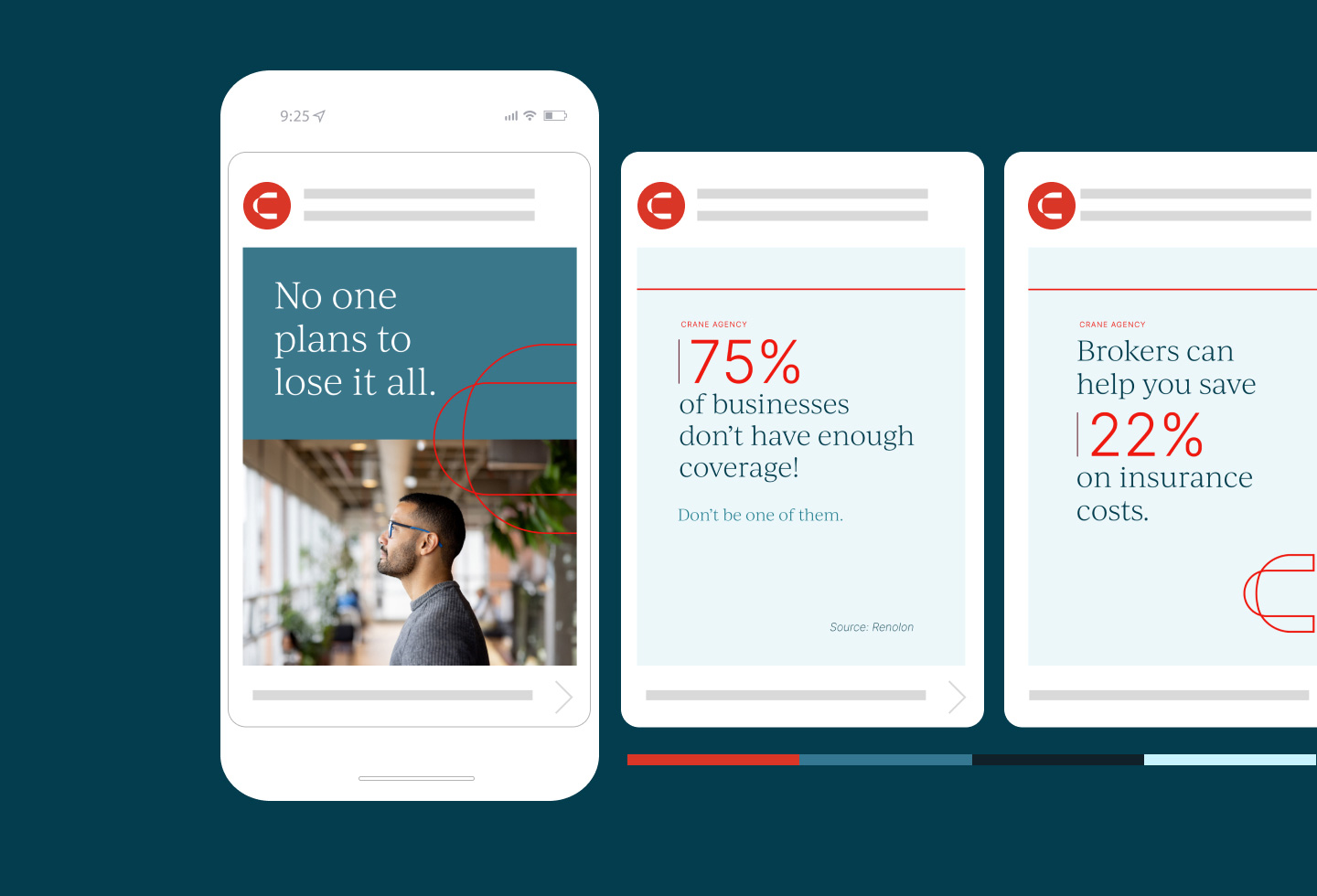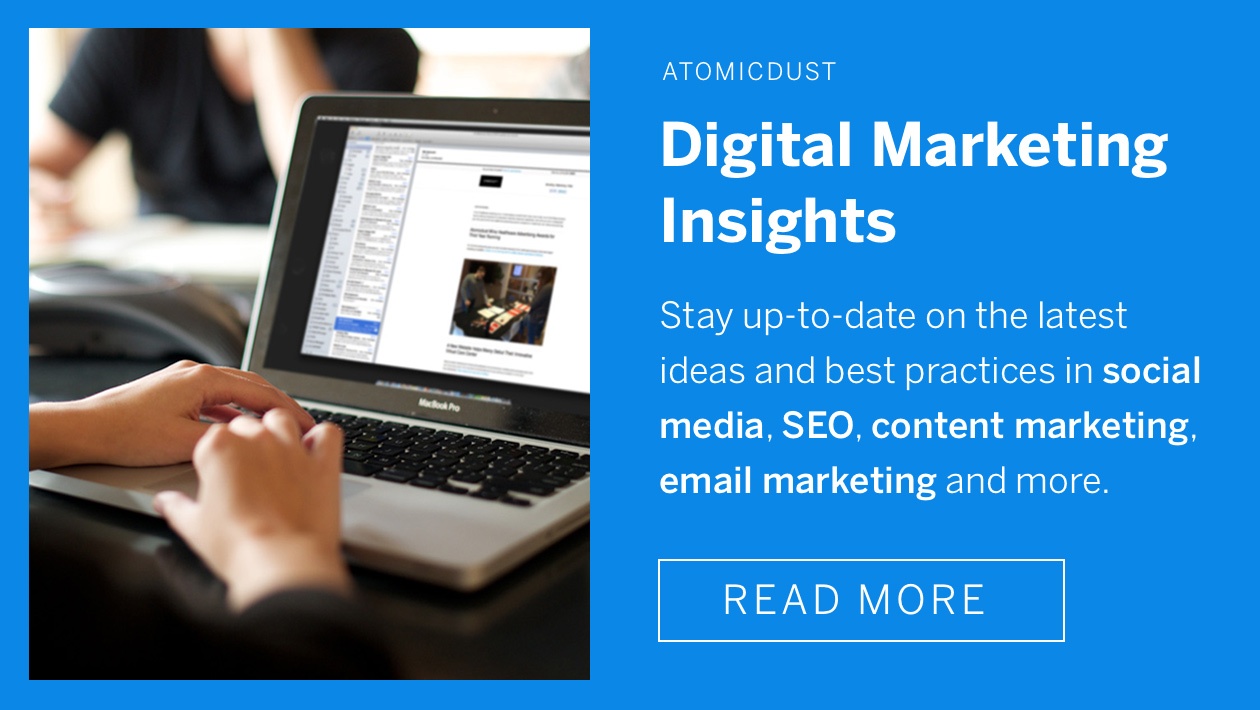The Economics Behind B2B Demand Generation
“We’re not getting enough leads.”
If you’re a marketer, then you’ve heard this age-old gripe. It’s one of those statements that makes most marketers cringe.
Why? Because it’s shortsighted, and only looks at one end measurable. It doesn’t take into account the lead quality, generated revenue or conversion rates. It simply looks at one number in a sea of many.
Marketers, we’re better than that.
For many of us, especially in B2B, our goal is to provide sales teams with the highest quality leads who are well-educated on their own customer pain points and are primed for closing. But many organizations lose sight of the fact that marketers are a support team. Instead, sales and marketing teams are conditioned to believe the value of marketing is solely measured through lead generation.
Since entering the digital marketing space, I have been fighting the idea that lead generation is the only end goal. We shouldn’t be competing over a finite number of today’s potential buyers, but rather, working to build a brand that establishes credibility through thought leadership and educates future buyers on problems that they may or may not know they have.
This is the Pandora’s Box of marketing—where opportunities soar and companies prosper.
This is demand generation for your business.
I know what you’re thinking. “Increasing demand for my business sounds great, but what does that actually mean?”
Generating demand for your business means increasing the total number of people who would ever consider your products or services because they know who you are, trust your quality of work and understand that you solve their problem.
Put another way, your company can fight to get the biggest market share of the existing audience, say 1,000 people. Or you can focus on demand generation, and foster audience growth to eventually have a market share of 100,000 people.
And when a future customer becomes ready to buy, they immediately turn to your company.
What is demand generation marketing?
What exactly is demand gen?
Demand generation marketing is any marketing tactic or activity that is aimed at identifying, educating and nurturing prospects that could benefit from your business’ services or products—whether they realize it or not.
The goal isn’t to con buyers into purchasing something they don’t need, but rather to properly align potential clients with a product or service that exactly fits their needs.
By educating and providing value to potential customers, marketers can reduce wasted sales team time and create leads that are more likely to convert.
This is hyper-relevant in the B2B space where the quality of leads is vital and sales cycles are longer.
The focus at the top of the demand generation sales funnel becomes less about ‘shotgun spread’ awareness (where marketers attempt to connect with a wide audience, whether or not they’re relevant to the brand) and more about creating inbound marketing opportunities.

A marketing plan without a demand generation strategy in place misses out on potential customers entering the marketing funnel.
The opposite of a sales team using cold calls to try to find new leads, inbound marketing involves educating potential customers through content distribution and advertising.
Eventually, prospects often start the buyer’s journey on their own by reaching out to the company instead of waiting for the company to reach out first. It’s less time-intensive for the sales team, and often, lead quality improves.
Demand gen doesn’t stop there. For B2B companies with longer sales cycles, marketing teams can support lead nurturing by sharing helpful content, stay in touch through email marketing campaigns and add touchpoints with retargeting ads.
All of these demand generation tactics guide the buyer through the sales funnel and provide value, so that when the buyer is ready to purchase, there’s no doubt where they’ll turn.
Demand generation vs. lead generation: What’s the difference?
The two marketing strategies do share a lot of overlap, but there are some stark differences, especially in measurable metrics.
Lead generation seeks to capitalize on the opportunities that are currently present in the marketplace today. The goal of demand generation, however, is to grow the total amount of qualified opportunities in the marketplace.
The distinction is important: form fills or phone calls to a sales team are great, but a phone call from a qualified lead that has already experienced relevant content and knows exactly what they need is a salesperson’s best friend.
The best B2B marketers view lead generation as an arm of their demand generation strategy. There should always be a focus on how a business can optimize its process of turning opportunities into leads and leads into sales.
A successful demand generation program uses lead generation tactics, or contact collection points, only after someone has already expressed interest in the business.
Imagine clicking on an article in Google, and less than five seconds into reading, you get a pop-up asking you to subscribe. (Unfortunately, you probably don’t have to imagine—this is an all-too-common occurrence.)
Asking for a visitor’s contact information at the wrong time in the user experience can be abrupt and invasive. Plus, it rarely works.
Few qualified leads are willing to share their information and spend time on a sales pitch before they even see the value in a company.
To use both strategies successfully in the buyer journey, marketing and sales teams need to identify the goals of every tactic and attribute it to either demand gen or lead gen.
From there, they can map out the customer journey, showing how marketing leads move through the sales funnel after exposure to demand gen tactics and eventually end up at a lead gen opportunity only after being curated into a quality lead.
This process of creating demand before entering the sales process generates more high-quality leads, improves the sales cycle and makes sales enablement easier.
Providing value and educating B2B prospects
B2B marketers, I feel your pain.
B2B businesses are at the mercy of long sales cycles, fewer opportunities and, typically, more expensive price points.
Investing in future opportunities to continually fill the sales pipeline becomes the best strategy to generate leads. By creating demand for your offerings, you can stop hunting for leads and start farming them. But how does that demand generation happen?

Valuable, educational content catches target audience members and generates demand for your product or service.
Demand gen strategies hinge on the principle of providing value.
Creating value for a target audience can happen a number of ways—but the most effective is with content marketing.
A robust content marketing strategy typically includes blogs and articles (usually about industry insights, updates or best practices), infographics, white papers, case studies, videos or podcasts—which can then all be distributed and promoted through social media, email campaigns and paid social ads.
By providing valuable information to audiences, a company can not only generate demand for its offerings but also grow brand awareness as content reaches new people.
The way to create demand is to educate your market on problems audience members may or may not know they have, and how your business can solve them.
It’s enough to just identify key customer pain points—you also need to reach customers with those pain points and show them how your brand can make their life better.
Content pieces created for those audience members and target accounts can deliver on the education marketing tactic.
How to invest in your B2B demand generation strategy.
You’ve done the trade shows, hosted industry conferences, sent countless LinkedIn product demo messages—and your sales team still isn’t happy. It’s time to start investing in B2B demand generation. But how?
Elevate your customer journey.
The old B2B customer journey is becoming antiquated.
Cold callers reach out to prospects through constant phone calls and email check-ins, trying to nurture low-quality leads into paying customers.
Maybe there’s a few customers acquired, or not. But this marketing strategy forgets one critical component: the internet.
Prospects can do their own background research on companies that solve their problems. Also, who has time for all those cold calls?
For a successful demand generation program, you need to update your buyer journey to include valuable touchpoints before a salesperson ever connects with them.
This means making yourself discoverable in search through SEO, so when a prospect is looking for a solution, you’re top of the list.
It also means constantly publishing content like blogs, social media, email marketing and video production, content that is equally as engaging to your target audience as it is educational. And it means using advertising platforms to expand the reach of the content you’re producing.
Respect your sales cycle length.
Every sales team wants to shorten the buying journey to get more leads in less time.
But very rarely can a single marketing tactic trigger a B2B buyer to upend their business’ processes for a new product or service.
Instead, your demand generation team should begin to nurture accounts that aren’t ready today through demand gen marketing efforts and let those opportunities come to you when they are ready.
A proper demand generation strategy that sets up touchpoints throughout the sales cycle will see an increase in qualified leads when those leads properly mature. Demand generation marketing takes patience.
Knowing the average customer lifetime value will help sales and marketing teams scope how much they should invest into each prospect during the maturation process.
A $15,000 marketing budget might sound astronomical, until you compare it to $1.5 million lifetime value of securing one client.
Demand generation aims to minimize the advertising dollars as the only means to market, instead using those dollars alongside more cost-effective demand generation strategies like content production.

Un-gate some of your content.
Gone are the days where content was sparse enough that users would be willing to give up their contact information in exchange for your industry insights. Free content is readily available and many users will seek out free content to avoid gated content.
Instead, industry influencers are encouraged to make content free and easily accessible.
While it might seem counterintuitive to not ask for contact information before giving high quality leads access to your knowledge, conversion rates on free content with the option to subscribe or learn more are better than if that same content piece was gated.
Podcasts and free webinars are excellent examples of this.
Throw your attribution model out the window.
I’m a self-proclaimed data jockey. I love geeking out on marketing attribution as much as the next guy.
The problem? Multi-touch marketing attribution leaves too many variables on the table and is often wildly inaccurate. So, while marketing attribution may be one of digital marketers’ best tools, it can also be one of our biggest crutches.
Digital tools that measure who converts, where, and due to what marketing tactics are fantastic for helping validate those inbound marketing efforts.
They’re also losing value, thanks to data privacy laws, and don’t take into account how users actually interact with brands across different mediums.
Users seamlessly transition from engaging with brands on social media on their phones, to clicking an ad on their computer at the office, to attending in-person events.
Multi-touch tools can provide directional data in these scenarios, but they can’t be the end-all-be-all for measuring leads generated.
Take paid social media ads and display ads as an example: A user will rarely click a LinkedIn ad and then immediately convert on the landing page or website.
More likely, a user will see a LinkedIn ad, research the company on Google later on, reads a blog or article and then later begin the buying process.
If we only measured the value of the LinkedIn ad by the direct attribution to leads generated, we would never run a paid social ad again.

Incorporate marketing automation.
As digital marketing evolves and new marketing automation tools emerge, it becomes increasingly important to distinguish which tactics to automate and which ones to manually monitor.
As a good rule of thumb, automating the simple demand generation tactics that are the most time-consuming will allow you to dedicate more time to complex demand generation strategies that have a higher return.
Marketing automation doesn’t always require huge budgets or the latest technology. We frequently recommend our clients’ demand generation efforts include automating email drip campaigns.
With proper setup and audience segmentation, marketing teams can automatically distribute relevant content to curated audiences lists.
This demand generation strategy can be set up once, and support strong returns for years.
Ready for Growth? – Dive into Demand Generation Marketing with Atomicdust. Contact us and let’s talk about your business.


